In this post, we will share photos of the entry hall as it appeared before rehabilitation efforts began in 2020. This rehabilitation will add structural upgrades, accessibility improvements, and period-appropriate finishes to the house. At the end of this post, you'll get a sneak peek into the new wallpaper and carpet coming soon!
Moving the McLoughlin House
The McLoughlin House was built for Dr. John McLoughlin and his family near the Willamette Falls, on the east side of Main Street between 2nd and 3rd streets, in 1845. The McLoughlin House was an important landmark in the early days of Oregon City, but after the McLoughlins left the home, it fell into disrepair. The intrepid efforts of the McLoughlin Memorial Association saved this historic home.
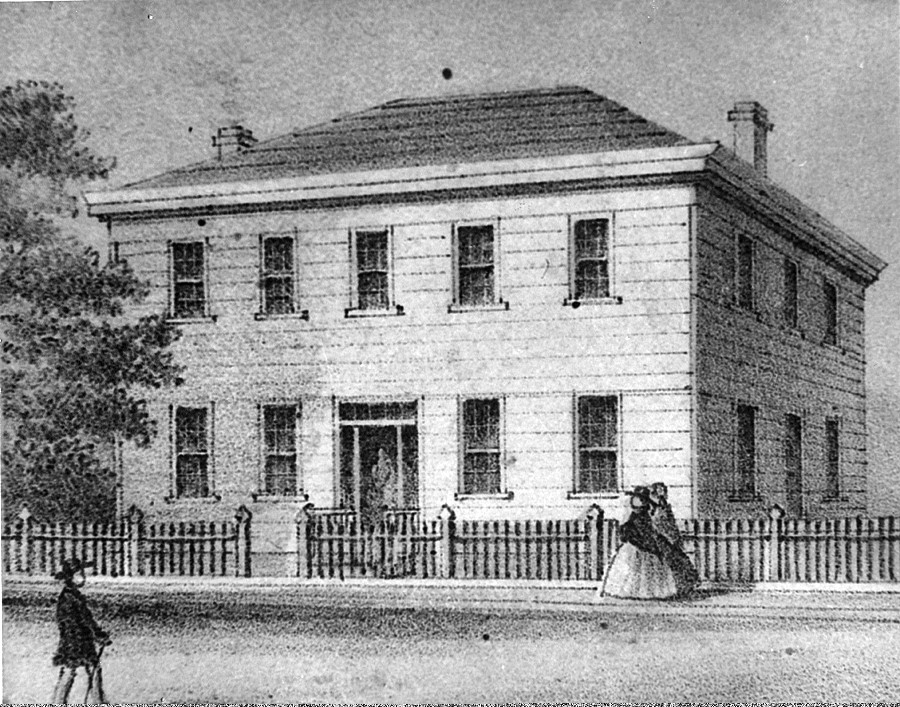
The McLoughlin House as it appeared in its original location in 1845. (NPS Photo)
After John McLoughlin died in 1857 and his wife, Marguerite, died in 1860, the home was left to their daughter, Eloisa. It was sold in 1873, and Eloisa and her family moved to Portland, Oregon. After the family left, many alterations were made over time, including an addition to the back of the home. After changing hands and purposes multiple times, the home fell into disrepair. Eventually, the land the home sat on became more valuable, in an economic sense, than the house itself. The land was sold to the Hawley Pulp and Paper Co., who had no use for the structure. The company offered the house to the City of Oregon City, but the city was not willing to pay for the repairs or the relocation of the home. This issue spurred one woman, Eva Emery Dye, to take up the charge of saving the McLoughlin House in 1909. Eva, along with a newly-formed group of women, advocated throughout the area to save the home. Many early preservation movements began in this way, with support by women's groups. This was the beginning of the McLoughlin Memorial Association (MMA), which still exists today as a nonprofit partner of the National Park Service.
In 1909, the McLoughlin Memorial Association was not able to raise enough money to move the home in pieces, the standard method of the time. The MMA was approached by a man who had the genius idea to move the house whole... using one horse. This was done with the simple technology of a capstan winch. Slow and steady, the home was moved to its current location at the top of Singer Hill. Once reaching its new location, the MMA spent a few months investing in repairs. Eventually, the MMA acquired enough period appropriate furniture to reopen the house as a museum.
The Entry Hall
Below are the last pictures taken in the entry hall prior to the contents of the home being packed up to protect them during rehabilitation efforts currently underway. The entry hall is significant to the McLoughlin House not just because it's where tours of the house begin in the present day, but because it provided the first impression that visitors received of the house when they visited in the 1850s. Here, Dr. and Mrs. McLoughlin welcomed guests to the house. In the early days of Oregon City, this grand entry hall would have been pretty impressive!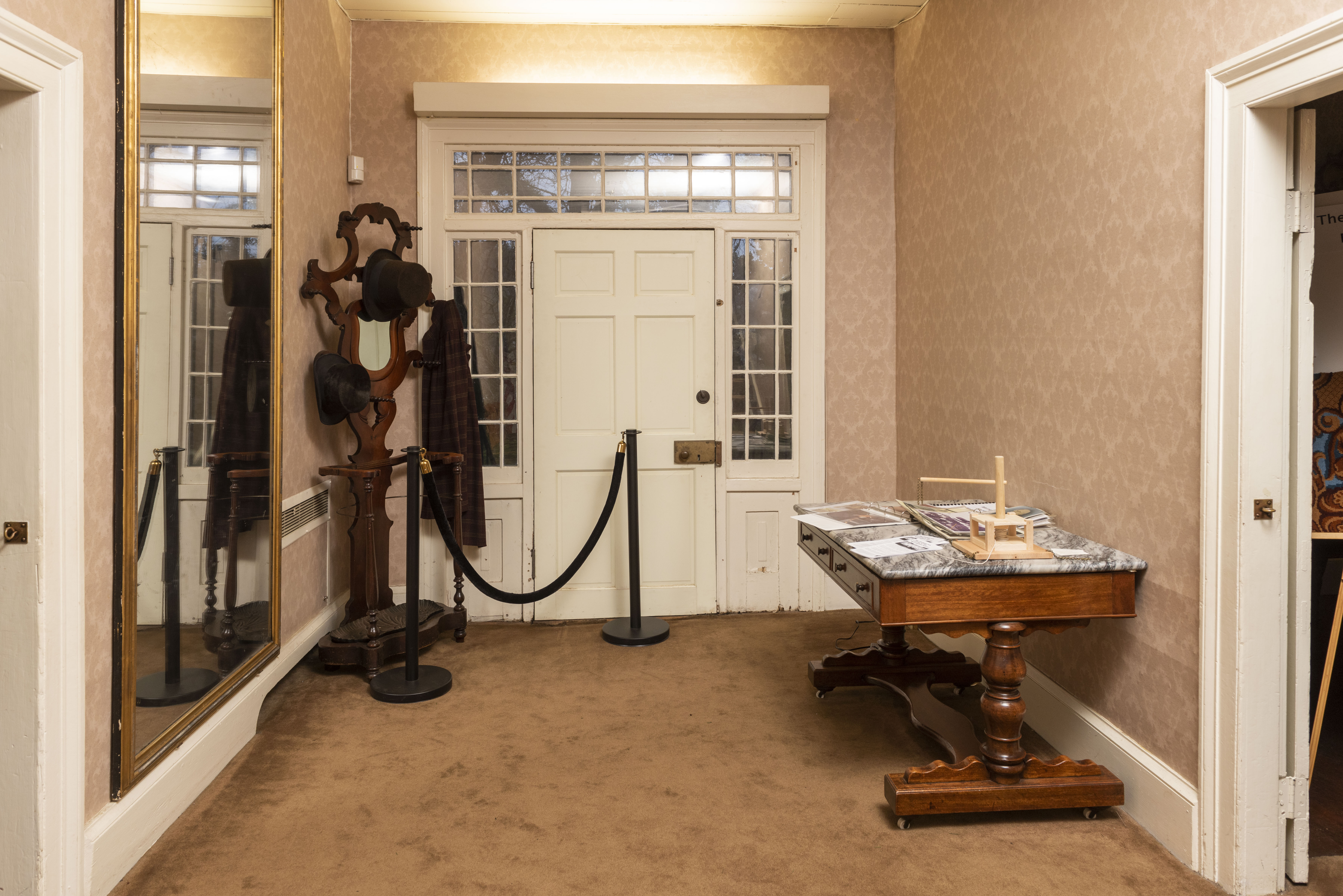
This photo shows the backside of what was the front door of the McLoughlin House as it appeared in 2020. (NPS Photo)
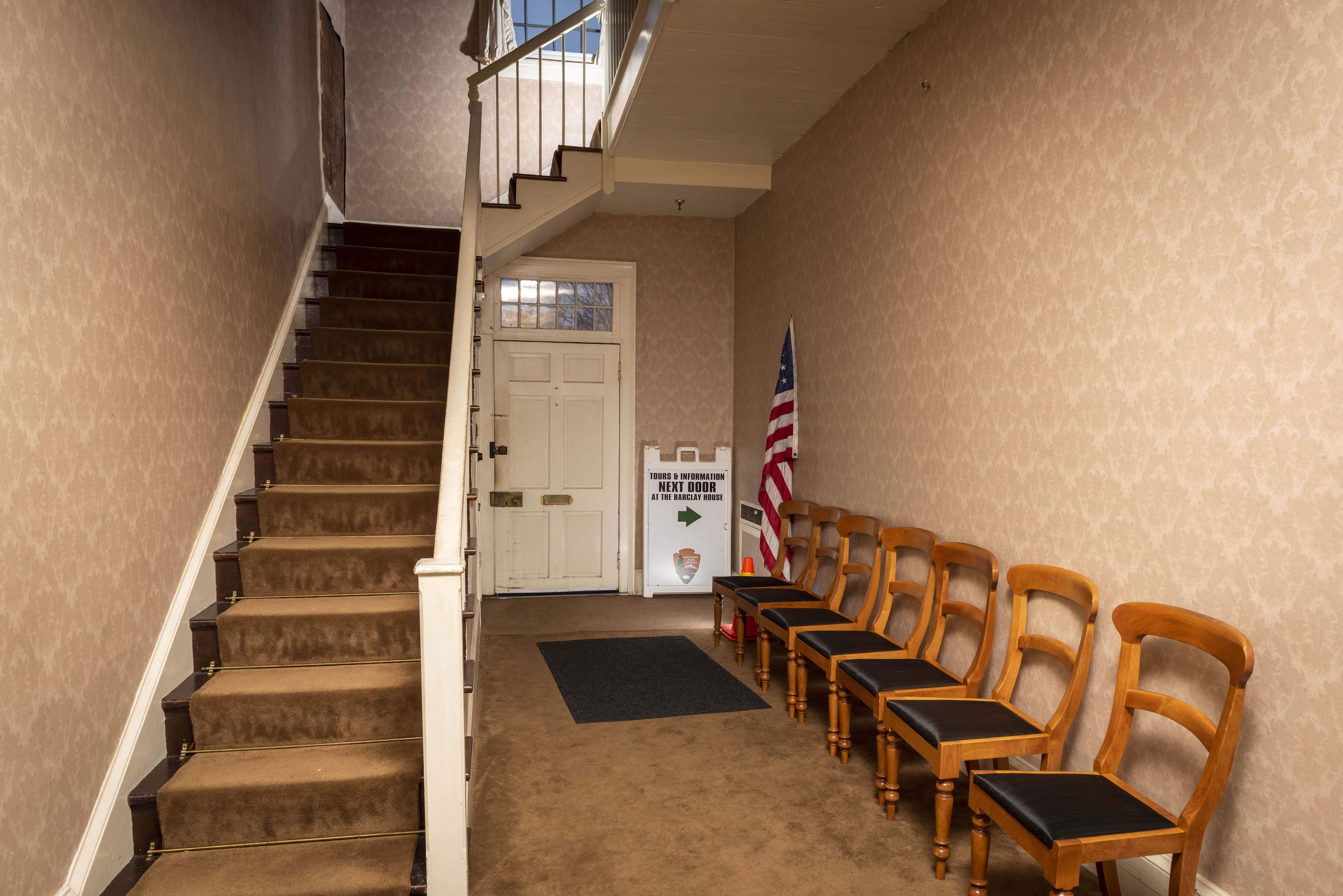
This photo shows the entry hall of the McLoughlin House, facing what was the back door, as it appeared in 2020. This door is used as the main entrance to the house now. The stairway leads to the house's second floor. (NPS Photo)
The changes that are currently underway at the McLoughlin House are not the only time the house has been rehabilitated. Since it was moved in the early 20th century, work has been done on the McLoughlin House to represent early Oregon City and the McLoughlin family's lives here. The photo below shows the same view of the entrance hall as it appeared in the 1940s. How many differences can you spot?
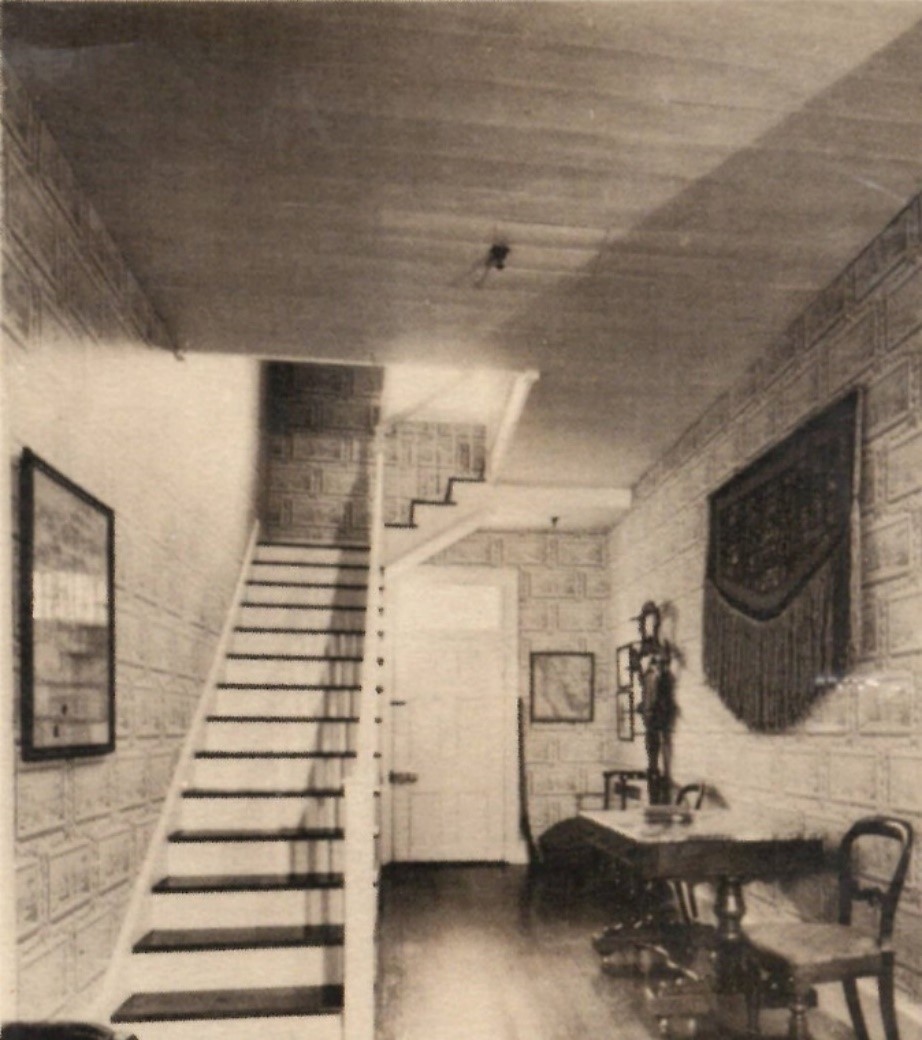
The McLoughlin House entry hall as it appeared in the 1940s. (NPS Photo)
A New Look
As part of the current rehabilitation of the McLoughlin House, which began in 2020, rooms in the house will receive new period-appropriate wallpaper and carpet. Check out the image below for a sneak peek of the entry hall's upcoming new look!
The wallpaper and wallpaper border seen here on the left are reproductions of historic wallpapers from the mid-1800s. These patterns were chosen because of the presence of a red block print-type design on a fragment of original wallpaper still present in the house.
The carpet you see to the right here will replace the current carpet in the McLoughlin House entry hall. Like the wallpaper, it is a reproduction of a historic 19th century carpet manufactured in the United States.
We can't wait to share the striking new look of the McLoughlin House entry hall with you when the rehabilitation is complete!
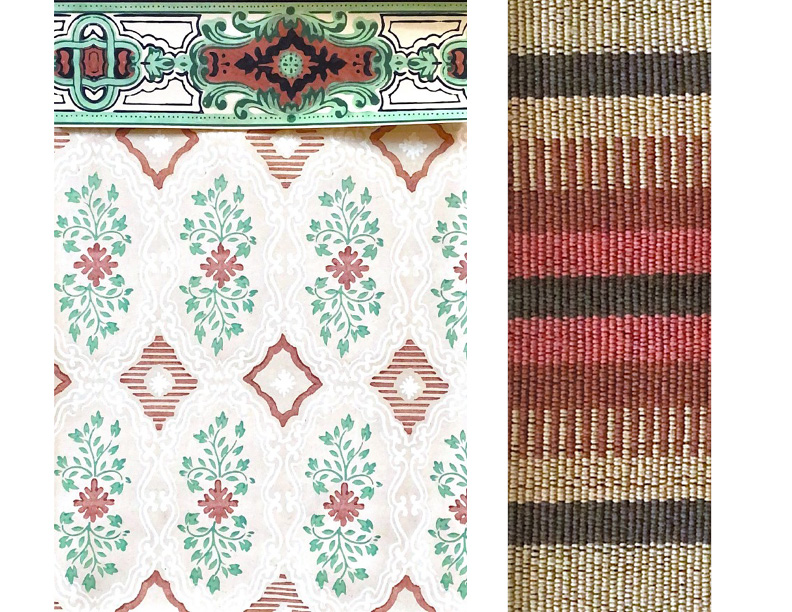
The carpet you see to the right here will replace the current carpet in the McLoughlin House entry hall. Like the wallpaper, it is a reproduction of a historic 19th century carpet manufactured in the United States.
We can't wait to share the striking new look of the McLoughlin House entry hall with you when the rehabilitation is complete!

